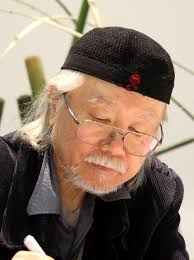Biography
Leiji Matsumoto Death, Cause Of Death, Biography, Age, Career, Family, Net worth, Early Life, Weight, Height
Published

Matsumoto Reiji was a Japanese mangaka who was responsible for the creation of a number of anime and manga series. He was born Akira Matsumoto on January 25, 1938, and passed away on February 13, 2023. His wife Miyako Maki is also a manga artist.[4]
Matsumoto was the middle child of a family of seven brothers, and his father gave him a 35mm film projector when he was a little child. During the time that his country was at war with the United States, Matsumoto used the projector to watch American cartoons. At this time period, he developed an appreciation for the works of science fiction authors such as Unno Juza and H. G. Wells. He moved to Tokyo when he was 18 years old in order to pursue a career as a manga artist.
Matsumoto made his first appearance in the public eye in 1954 under his given name, Akira Matsumoto, with the publication of Mitsubachi no bken in the magazine Manga Shnen.

1971 was the year that Matsumoto’s work, Otoko Oidon, which was a series that portrayed the life of a rnin (a young man preparing for university entrance examinations), brought him his first significant success. In 1972, he created the mature-themed dark comedy Western seinen series Gun Frontier for the magazine Play Comic, which ran from 1972 through 1975. The series ran for a total of five years. About the same time, he began writing a collection of short stories called Senjo Manga Series, which were all set during World War Two but had no connection to one another. These works subsequently gained notoriety under the title The Cockpit.
In 1974, he was a part in the production of Space Battleship Yamato, and he was the brains behind the incredibly successful series Space Pirate Captain Harlock and Galaxy Express 999. (both 1977). In 1978, the Shogakukan Manga Prize for shonen was bestowed upon him in recognition of his work on the Galaxy Express 999 and Senjo Manga Series. [7] The animated adaptations of Captain Harlock and Galaxy Express 999 take place in the same universe as their live-action counterparts. This universe has been expanded upon in a number of spin-offs and related shows, the most notable of which are Queen Emeraldas and Queen Millennia.
Matsumoto oversaw the production of a number of music videos for the French house act Daft Punk. These movies were set to music from the band’s album Discovery. For the DVD release of Interstella 5555: The 5tory of the 5ecret 5tar 5ystem, these movies were issued end-to-end, resulting in the creation of an animated feature film of the complete duration.
In 1999, the downtown area of Tsuruga was adorned with approximately twenty-four bronze statues, each measuring approximately four feet in height and depicting characters and scenes from the television shows Space Battleship Yamato and Galaxy Express 999.
Attached to the bottom of each statue is a plaque that provides background information about the figure and bears Matsumoto’s autograph.
Matsumoto and Yoshinobu Nishizaki collaborated on the production of Space Battleship Yamato, which is known outside of Japan by a variety of names, but is most generally referred to as Star Blazers.
Matsumoto created a manga loosely based on the series, and the Yamato makes cameo appearances (sans crew) in several of his works including the Galaxy Express 999 manga.
A later work by Matsumoto called Great Yamato featuring an updated Yamato had to be renamed Great Galaxy due to legal issues with Nishizaki.
As of 2009, Matsumoto and Nishizaki were working on independent anime projects featuring the acclaimed Space Battleship Yamato, with the conditions that Matsumoto cannot use the name Yamato or the plot or characters from the original, and Nishizaki cannot use the conceptual art, character or ship designs of the original.
Since Nishizaki’s death in 2010, it is uncertain whether these restrictions will continue to apply.
In August 2014, to celebrate the 60th anniversary of his debut, Matsumoto launched the manga Captain Harlock ~Jigen Kōkai~ (Captain Harlock: Dimensional Voyage), illustrated by Kōichi Shimahoshi, in the pages of Akita Shoten’s Champion Red magazine.
Miyako Maki, who is better known as the inventor of the doll Licca-chan, which is the Japanese counterpart of Barbie, is his wife and she is a shjo manga artist.
Matsumoto was participating in an event marking the 40th anniversary of the Captain Harlock anime adaptation on November 15, 2019, in Turin, Italy. During the event, Matsumoto developed severe respiratory problems and fell, which led to the cancellation of the event. He was in critical condition when he was rushed to the hospital, and shortly after being admitted to the emergency room, a breathing tube was placed into him. However, after two days, it was determined that he was no longer in any immediate danger.
On February 13, 2023, at the age of 85, Matsumoto passed away at a hospital in Tokyo from sudden heart failure.
